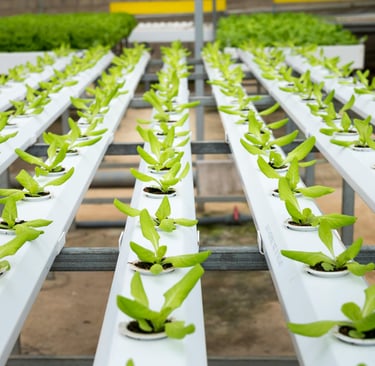Are Bio-Based Polyols the Future of Construction Foams?
Among the exciting developments in polyurethane (PU) foam technologies, bio-based polyols are emerging as a compelling alternative to conventional petroleum-derived polyols.


The construction industry is undergoing a transformative shift, with sustainability and environmental responsibility now at the heart of innovation. Among the exciting developments in polyurethane (PU) foam technologies, bio-based polyols are emerging as a compelling alternative to conventional petroleum-derived polyols. But are bio-based polyols truly the future of construction foams? Let's explore the science, benefits, challenges, and real-world applications to find out.
What Are Bio-Based Polyols?
Polyols are key components in the production of polyurethane foams. Traditionally, these polyols are made from petrochemical sources. Bio-based polyols, on the other hand, are derived from renewable resources such as:
Soybean oil
Castor oil
Palm oil
Corn and sugarcane derivatives
Waste vegetable oils or lignin
The chemical structure of bio-based polyols can be tailored to mimic or enhance traditional polyols, allowing them to be used in rigid and flexible foams, including those used in construction applications.
Why Bio-Based Polyols Matter in Construction Foams
Polyurethane foams are widely used in insulation, sealants, adhesives, and structural components in the construction sector. Bio-based polyols offer several advantages that align with the construction industry's push toward greener materials:
Reduced carbon footprint
Renewable feedstocks
Lower VOC emissions
Compliance with green certifications like LEED and BREEAM
Improved thermal insulation in some formulations
These benefits make bio-based polyols not just an eco-friendly choice, but a strategic one for companies aiming to stay ahead of regulatory and consumer expectations.
Performance: Can Bio-Based Match Petro-Based?
One of the biggest questions is whether bio-based polyols can compete in terms of performance. The answer is nuanced.
Rigid polyurethane foams made with bio-based polyols can offer similar closed-cell content, compressive strength, and R-values compared to conventional systems.
Some formulations show improved adhesion and dimensional stability.
However, bio-polyols may have limitations in consistency, shelf life, and curing speed if not optimized properly.
Leading manufacturers are continuously working to overcome these challenges through chemical modification, hybrid formulations, and advanced catalysts.
Leading Products & Companies Using Bio-Based Polyols
Several major players in the market are investing heavily in bio-based PU technologies:
BASF: Offers bio-based polyols under the "Lupranol® Balance" line.
Covestro: Developing bio-circular feedstock-based foams for insulation and automotive use.
Dow: Incorporates plant-based oils in their insulation products for green building projects.
Huntsman: Exploring castor-oil-based polyols for rigid foam insulation.
Polioles and smaller startups are also creating tailored solutions for spray foam and panel insulation.
Compatibility with Spray Foams and Board Bond Adhesives
Bio-based polyols are increasingly being tested and implemented in one-component foams (OCFs), two-component spray polyurethane foams (SPFs), and board bond adhesives. These are critical applications in both residential and commercial construction:
SPFs using hybrid polyols (bio + petro) can maintain high performance while reducing environmental impact.
Adhesive foams for roof boards and wall panels benefit from bio-polyols that improve tack and reduce solvent reliance.
Canned OCFs are now emerging in select markets with bio-content labeling to attract eco-conscious consumers.
Regulatory and Green Building Compliance
Using bio-based polyols can support certification goals in programs like:
LEED (Leadership in Energy and Environmental Design)
GreenGuard
WELL Building Standard
Living Building Challenge
Green Globes
These certifications often reward use of rapidly renewable materials, low VOCs, and improved lifecycle analysis (LCA) scores—all of which are facilitated by bio-based PU systems.
Economic Considerations
Adopting bio-based polyols can come with a higher cost, especially when:
Feedstock availability fluctuates
Processing complexity increases
Market demand isn’t yet high enough for large-scale production
However, prices are expected to drop as:
Agricultural waste streams are more efficiently used
Government incentives (especially in the U.S. and Canada) are implemented
Builders and architects push for greener product specifications
Future Outlook: Are Bio-Based Polyols the Standard of Tomorrow?
The future of construction foams is likely to be hybridized—leveraging both bio-based and petrochemical polyols to optimize performance and sustainability. Full replacement may take time, but the trend is clear:
Research funding is accelerating globally
Green building codes are becoming more stringent
Consumer awareness is driving innovation and demand
Contractors, architects, and foam manufacturers who embrace this transition early can position themselves as leaders in green construction.
Final Thoughts
Bio-based polyols are not just a marketing buzzword—they represent a credible, scientifically grounded solution to reduce the environmental impact of construction materials. While there are still performance and cost challenges to solve, these alternatives are proving their worth across a wide range of applications. For the future of sustainable construction, bio-based polyols are not just a possibility—they're an inevitability.
Whether you're a formulation chemist, insulation contractor, or green building advocate, it's time to take bio-based PU foams seriously. The spray foam game is evolving, and those who innovate now will lead tomorrow.
